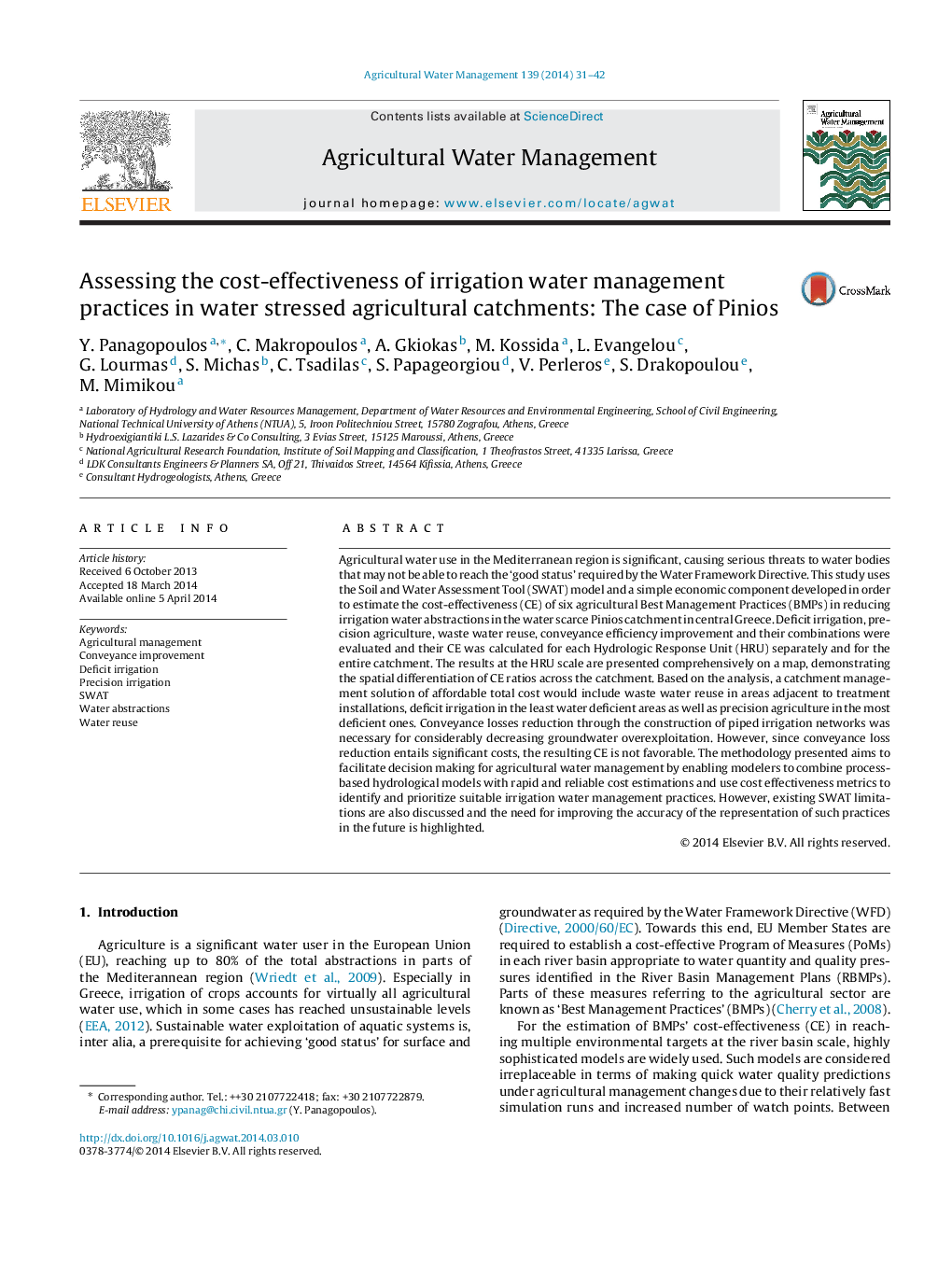| کد مقاله | کد نشریه | سال انتشار | مقاله انگلیسی | نسخه تمام متن |
|---|---|---|---|---|
| 4478709 | 1622940 | 2014 | 12 صفحه PDF | دانلود رایگان |
• Six irrigation BMPs were tested with SWAT in the Pinios basin, central Greece.
• A methodology of costing the BMPs is presented including direct and indirect costs.
• The cost-effectiveness (CE) of BMPs in reducing water abstractions is evaluated.
• The study also criticizes SWAT highlighting limitations and needs for improvement.
Agricultural water use in the Mediterranean region is significant, causing serious threats to water bodies that may not be able to reach the ‘good status’ required by the Water Framework Directive. This study uses the Soil and Water Assessment Tool (SWAT) model and a simple economic component developed in order to estimate the cost-effectiveness (CE) of six agricultural Best Management Practices (BMPs) in reducing irrigation water abstractions in the water scarce Pinios catchment in central Greece. Deficit irrigation, precision agriculture, waste water reuse, conveyance efficiency improvement and their combinations were evaluated and their CE was calculated for each Hydrologic Response Unit (HRU) separately and for the entire catchment. The results at the HRU scale are presented comprehensively on a map, demonstrating the spatial differentiation of CE ratios across the catchment. Based on the analysis, a catchment management solution of affordable total cost would include waste water reuse in areas adjacent to treatment installations, deficit irrigation in the least water deficient areas as well as precision agriculture in the most deficient ones. Conveyance losses reduction through the construction of piped irrigation networks was necessary for considerably decreasing groundwater overexploitation. However, since conveyance loss reduction entails significant costs, the resulting CE is not favorable. The methodology presented aims to facilitate decision making for agricultural water management by enabling modelers to combine process-based hydrological models with rapid and reliable cost estimations and use cost effectiveness metrics to identify and prioritize suitable irrigation water management practices. However, existing SWAT limitations are also discussed and the need for improving the accuracy of the representation of such practices in the future is highlighted.
Journal: Agricultural Water Management - Volume 139, June 2014, Pages 31–42
